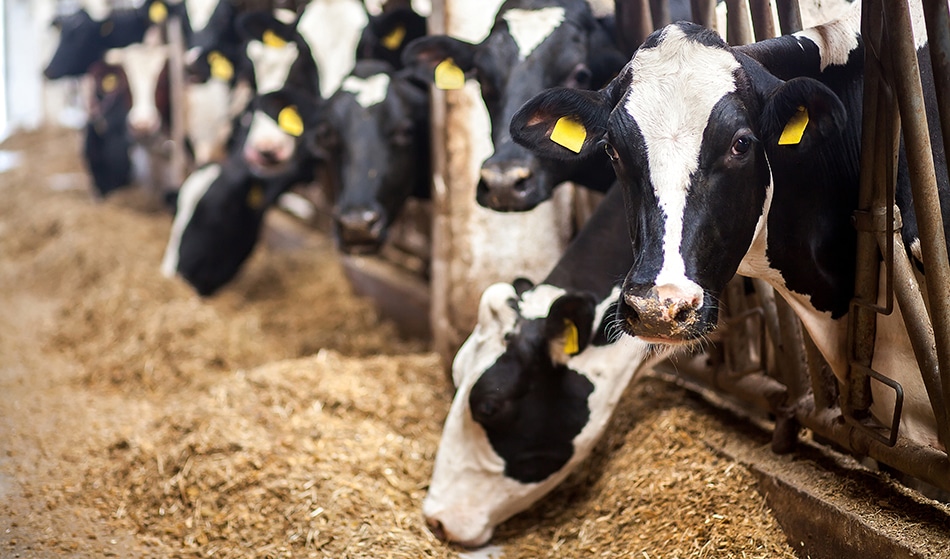USDA Listeria Testing in Agricultural Feed Products
The presence of Listeria monocytogenes in agricultural feed products poses significant health risks to livestock and humans. This service ensures that feed producers meet stringent regulatory requirements set by the United States Department of Agriculture (USDA) for the safety and quality of their products.
Our USDA Listeria testing protocol is designed to detect even trace amounts of this pathogen, which can have severe consequences if not controlled. Regulatory compliance is crucial in the agricultural feed sector, where food safety standards are non-negotiable. This service helps our clients avoid costly recalls and potential health crises.
Our laboratory adheres strictly to USDA guidelines for sample collection, processing, and testing. The process begins with aseptically collecting samples from suspect batches of feed. These samples undergo rigorous initial screening using culture-based methods or molecular diagnostics like polymerase chain reaction (PCR).
The chosen method depends on the volume of product being tested and the desired turnaround time. Culture-based techniques are reliable but can take longer to produce results, while PCR offers faster detection times at the cost of slightly higher initial investment in equipment.
Once samples are processed, they undergo incubation periods that allow for the growth of any present Listeria bacteria. Following this phase, isolation and identification steps ensure accurate differentiation between benign lactobacilli and potentially hazardous Listeria species.
The final step involves confirmation using biochemical tests or mass spectrometry, ensuring precise classification according to USDA standards. Our reports provide detailed information on the testing process, including any positive findings along with recommended corrective actions if necessary.
- Our testing services go beyond mere detection; they also offer valuable insights into potential contamination sources within production facilities.
- We collaborate closely with clients to develop comprehensive quality assurance programs tailored specifically for their operations.
- By leveraging advanced technologies and experienced professionals, we ensure our tests remain at the cutting edge of microbiological analysis.
In summary, our USDA Listeria testing service is essential for maintaining stringent hygiene standards in agricultural feed production. It plays a critical role in safeguarding both animal health and consumer safety by preventing the spread of harmful pathogens like Listeria monocytogenes.
Applied Standards
The USDA mandates adherence to specific standards when conducting microbiological tests on agricultural feed products. Among these are FDA requirements and ISO guidelines, which provide a framework for accurate detection methods.
We follow the recommendations provided in FDA's Compliance Policy Guide regarding acceptable levels of contamination and appropriate sampling strategies.
In addition, our laboratory is certified to perform tests according to ISO 13294, which specifies microbiological examination methods for food products. This certification ensures that our results are internationally recognized and comparable across different jurisdictions.
Our adherence to these standards guarantees reliable outcomes that meet regulatory expectations both domestically and abroad. By staying current with updates from organizations such as the FDA and ISO, we ensure continuous improvement in our testing methodologies.
Industry Applications
Agricultural feed manufacturers rely heavily on rigorous quality control measures to protect their brands and consumers alike. USDA Listeria testing is integral to this process as it helps identify potential hazards early in the supply chain.
This service supports various aspects of production, from raw material sourcing through final product distribution. For instance, during ingredient procurement stages, suppliers must provide documentation verifying negative test results for Listeria before being considered acceptable by our laboratory.
During manufacturing processes, in-process controls can also benefit greatly from regular sampling and analysis to ensure no cross-contamination occurs between batches or during storage conditions. After production completion, finished goods undergo final batch release testing ensuring compliance with all relevant regulations.
Furthermore, post-market surveillance involves continuous monitoring of marketed products for signs of contamination that might indicate lapses in quality assurance practices somewhere along the supply chain. Early detection allows prompt corrective actions to be taken before any adverse effects materialize.
Competitive Advantage and Market Impact
- Elevated Consumer Trust: By demonstrating strict adherence to USDA guidelines, companies gain credibility among consumers who prioritize safety when purchasing agricultural feed products.
- Avoidance of Recalls: Proactive testing helps prevent costly recalls and associated reputational damage. It also saves time and resources compared to reactive measures taken after incidents occur.
- Informed Decision Making: Understanding the microbial profile of raw materials aids in making informed decisions about supplier selection and process optimization.
- Enhanced Regulatory Compliance: Ensuring continuous compliance with changing regulations enhances long-term business sustainability. This includes avoiding penalties associated with non-compliance or even market bans if standards are not met.





